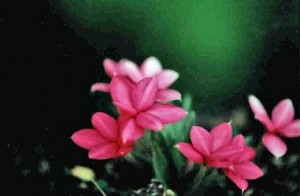OR BEST NOT FORGOT! -The Flower Bed
February is a mite shy in days, much less sunny ones, but it is the cusp between the last hardwood cuttings and the beginning of soft green ones.
Hardwood cuttings you can still take include: Camellia, Daphne, hydrangea, holly, lilac, Oregon grape, wiegelia and willow. Late February: Soft green cuttings can include forced dahlias. Plant in a greenhouse situation, then in March begin snipping off growth as it emerges from the tubers. Aubretia, armeria, coral-bells, dianthus, perennial lobelia and sedums are all good green cuttings this month and next.
Like the dahlia, delphiniums and aconitum can be greenhouse forced into March propagational growth. A good indicator for successful cuttings is when you see white hair roots on the basil nodes of the plants.
Divide and replant crocosmia or montbretia in enriched soils. Ornamental grasses also divide well at this time of the year. Some bulbs such as Snowdrops are very dividable during or right after their bloom. Don’t worry about the green foliage!Depending on the weather outlook, over wintered plants like geraniums, fuchsias and rhodohypoxis be fed and positioned to receive more light.
I also tip my bonsai pots (especially the shallow ones) and put a block of wood beneath one side so the pot can shed water better. All bonsai pots or for that matter most potted plants will benefit by having 'feet' placed under them. These can be flat rocks or simply broken clay remnants.
Trees and Fruit If soil conditions permit, continue planting fruit trees and bushes. See that your soil is not overly wet or clay like, as it should be friable enough to settle firmly around the new roots. Sometimes I recommend pre-digging the holes (covering them for safety's sake) then tarping the soil to dry it out. The trees or berries can wait -- or heeled in) as they would at the nursery.
When buying bare root fruit trees, try to get real ones, not those wrapped in skimpily plastic tights. Two reasons: roots need to be proportional to the tree. What you get in a bag are root amputees! Some trees like Peach, Cherry or Walnuts have massive root systems that are not easily bagged. Second, these carefree bare rooters are often displayed as to be frost and heat vulnerable. Just feel those bags on a sunny winter day! Do ask about roots! If your nursery person cannot answer rootstock questions, find another.
Apricots can be on three different kind of peach root, or two different kinds of plum -- rarely on apricot. Peach forms a larger and more unbag-able root system, and does better in dryer soils than doe’s plum. There are different cherry under stocks as well. All have definite cultural preferences, and size and longevity of the eventual tree are very dependent upon those root-stocks.
It's hard February or March pruning for buddleias and honeysuckles. Prune hydrangeas to just above the place last year’s growth began. Fertilize with 1 Tbs. (only) of Aluminum sulfate if you want them blue. Lime for Pink. Aluminum sulfate painted on greenhouse tables also deters snails and slugs.
Spray dormant canes, peonies and shrubs as well as fruit trees. Ask about the difference between sulfur spray and copper. Some trees and shrubs are very particular! Apply wood ashes to your roses and to your fruit trees. Poly-tunnel strawberries, or cover with Remay cloth for earlier harvests.
(C) Herb Senft 2006
Labels: cuttings, fruit trees, Pacific Northwest, pruning, Winter cores

